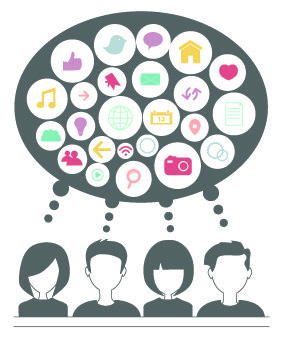 By Kevin Payne
By Kevin Payne
Social-media-savvy businesses are turning their best customers into direct sales forces online. By leveraging the social networks of their biggest brand advocates, retailers can extend the reach of their product promotions. It’s word-of-mouth advertising at a massive scale.
Some companies have been using this “social sharing” approach for several years to build brand awareness and drive sales. Until lately, though, such initiatives were hampered by unsophisticated methods for managing and engaging customers as well as tracking return on investment. Now, new tools and apps are available to develop a smart social sharing strategy that enhances customer experience while providing true ROI data based on sales conversions.
The potential for businesses to use social sharing to grow sales is huge. As consumers increasingly research, recommend, and share information about products and promotions via Facebook, Twitter, Google, Pinterest, email, and other social networks, consumer product companies are wise to invest in applications that make it easy for their brand advocates to recommend them online.
[24]7 Inc, which uses big data and predictive analytics to understand customers and drive better service and sales results for large enterprises, sees ample evidence of the power of social sharing:
- 15 percent of online shoppers share information about their purchases
- 40 percent read product and brand postings by friends
- 5 percent click through and purchase

Engaging Brand Advocates
More and more, customers expect a relevant, contextual, and easy social experience to be a core part of their relationship with a brand. Done well, social sharing engages brand advocates in the right social interaction at the right time.
To get the most from the social sharing opportunity, businesses need to engage with customers in real time. For instance, a brand can capitalize on a customer’s enthusiasm for its product or promotion by making it easy and natural for her to share it instantly, without leaving the business’s page.
Strong brands find ways to engage their customers in relevant ways across multiple touch points. They’ve taken social sharing from a Web-only interaction to an omnichannel experience that flows seamlessly across a businesses’ website, social sites, mobile apps, voice and chat channels, email campaigns, and even in-store programs, and lets customers share from whichever channel they’re using at that moment.
Aditya Kothadiya, director of product management at [24]7, says social referrals should enable businesses to increase conversions, reduce cart abandonment, and improve revenues. “For example,” he says, “if someone’s hesitating to conclude a purchase, they might check with friends on Facebook for information and get feedback that leads them to make the purchase. You want to enable them to do this while they’re on your site.”
Kothadiya points to several types of social sharing, including news about their purchases, promotions they like, information about a product they’re considering, or even customer service feedback.
Purchase sharing lets customers tell their social networks what they bought upon check-out. Offering a great deal online on flat screen TVs? Social sharing lets your customer immediately let others know about it on Facebook or Twitter, or via email. By providing a link to the product on the retailer’s website, the share can quickly lead to additional sales.
Businesses can also offer incentives such as referral credits to encourage sharing. For instance, some businesses offer current customers $25 off their next purchase when one their friends makes a purchase through the link they share. Offering the same discount to the customers’ friends increases the incentive for sharing.
Brooks Crichlow, [24]7’s VP of product marketing, says social sharing is highly measureable. “You know how many people were invited to share, how many shared, how many click through, and how many buy. Analytics and reporting make it easy to see the impact and gauge the ROI.”
Social sharing tools also make it easy to do A/B testing so you can determine which offers, messaging, and designs work best. Marketing teams can manage this process without leaning on the IT department, and they can adjust offers, messaging, design, and branding to quickly measure performance and find what works best.
A well-designed social engagement application makes social sharing a win-win for customers and businesses. People can be passionate about sharing great deals and excellent products. And businesses have an added incentive to deliver a quality customer experience. Social sharing, at its best, drives conversations, conversions, and revenue.
Kevin Payne is senior director of marketing at [24]7 in Campbell, Calif.
![]()
















